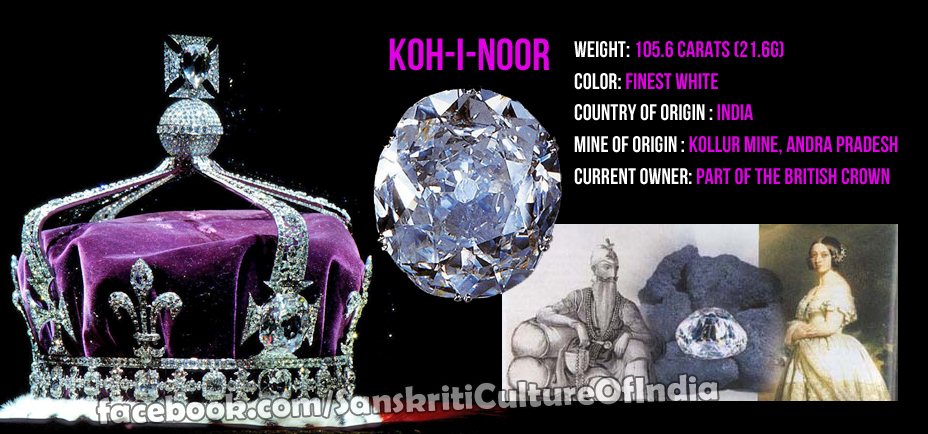Current name of the diamond, Koh-i-noor is in Persian and means `Mountain of Light`. Up until 1304, the diamond was in the possession of the Rajas of Malwa but was not called by its current name.
First document that verifies the existence of Koh-i-noor dates back to 1526 when it came into the possession of the Indian conquerer, Babur, mentioning the previous ownership by the Raja of Gwalior in the 13th century.
The diamond continuously changed hands between Indian and Persian rulers as they fought bitter battles throughout history.
The diamond ended up being mounted on the Mughal throne of India – the Peacock Throne. It is said that when Shah Jahan , the ruler who commanded the building of this throne and the Taj Mahal, was imprisoned by his son, that he could only ever see the Taj Mahal again through the reflection of this diamond.
The diamond once again was lost to India when it was stolen to Nadir Shah and made its way to Persia in 1739, again making its way back to Punjab in 1813 when Shuja Shah Durrani, the deposed ruler of Afghanistan, took it to India and made a deal to surrender the diamond in exchange for help in winning back the Afghan throne.
The diamond was 186 carats before the British acquired it by conquering Punjab and the stone was given to Queen Victoria by the then British Colonial Governor-General of India. Prince Albert carefully searched for a diamond cutter and gave the missions to a certain Mr. Cantor in Netherlands, who began the difficult task of cutting it which took 38 days to accomplish. Cut into an oval shape, the diamond lost its lustre and was reduced to its current form and weight of 108.93 carats. Apparently, Prince Albert wasn`t too happy with the end results.
The Koh-i-noor was mounted on the Royal Crown along with over 2000 other diamonds.
There is apparently a curse on the diamond that affects all men who wear it but women are immune. The Crown was used by Queen Victoria, Queen Alexandra, Queen Mary and Queen Elizabeth and is only worn by the female members of the British Royal Family as per Queen Victoria`s last will and testament.
Both India and Pakistan each claim the diamond be handed back to them by the British. However, as of February 21, 2013 British Prime Minister refused to hand it over, saying `I certainly don`t believe in “returnism”, as it were. I don’t think that’s sensible`.
The Crown is currently on display at the Tower of London and it looks like it is going to remain there indefinitely.











